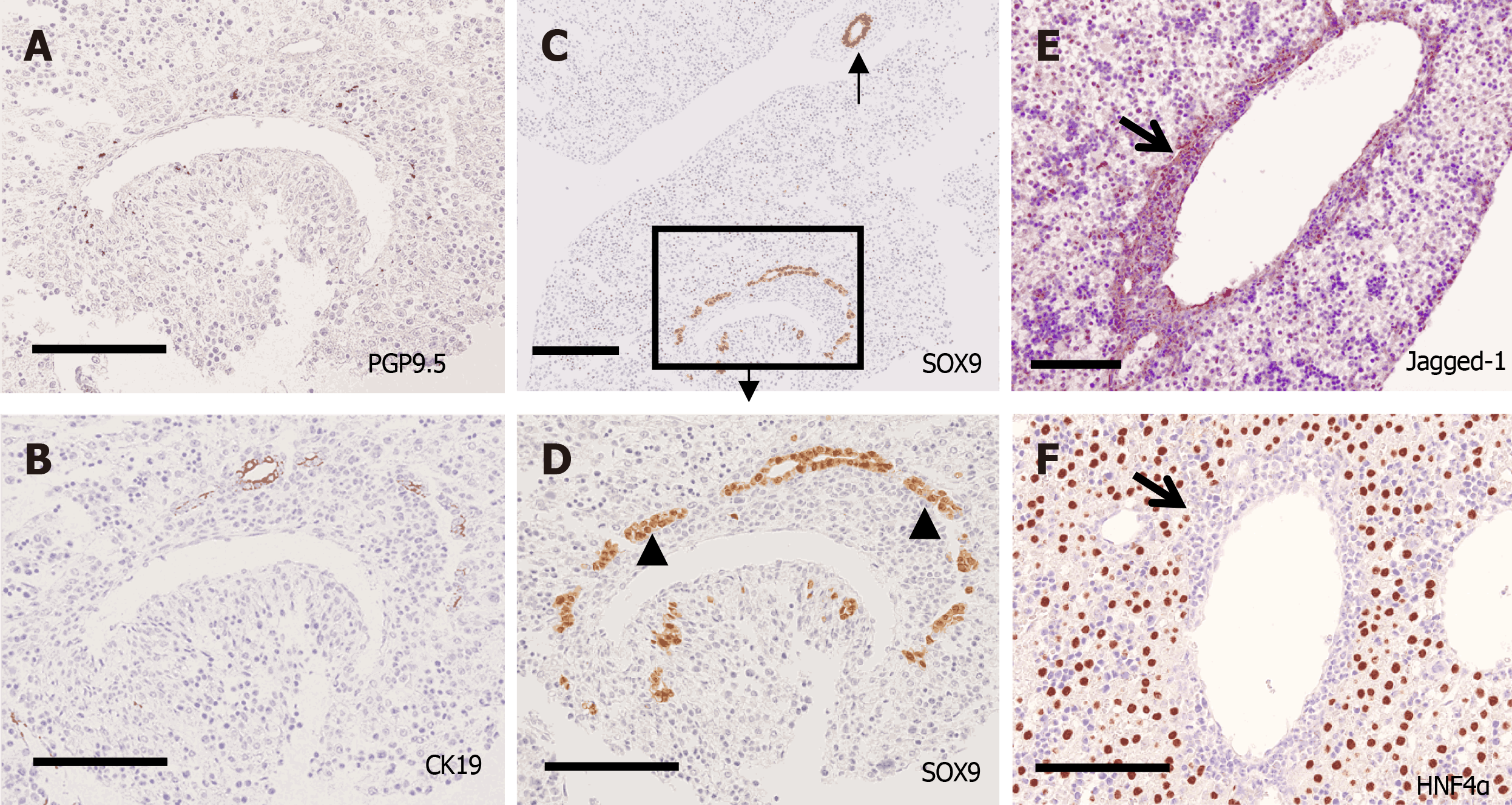Copyright
©The Author(s) 2022.
World J Hepatol. Feb 27, 2022; 14(2): 386-399
Published online Feb 27, 2022. doi: 10.4254/wjh.v14.i2.386
Published online Feb 27, 2022. doi: 10.4254/wjh.v14.i2.386
Figure 5 Immunohistochemical analysis of the center of the liver at embryonic day 16.
5 and embryonic day 17.5. A-D: Embryonic day 16.5; E and F: E17.5; A: Protein gene product 9.5 (PGP9.5)-positive bodies were found in the periportal tissue; B: Cytokeratin 19 (CK19) was partly positive in SRY-related high mobility group-box gene 9 (SOX9)-positive structures; C and D: SOX9-positive cells partly from double-layered cylindrical structures called ductal plates (arrowhead) and partly form ductal structures; C: The arrow indicates the hilar bile duct; E: Jagged-1 was mainly expressed in the periportal tissue (thick arrow); F: Hepatocyte nuclear factor 4α was expressed in the liver parenchyma but not in the Jagged-1-positive periportal tissue (thick arrow). Scale bars = 200 μm. CK19: Cytokeratin 19; SOX9: SRY-related high mobility group-box gene 9; PGP9.5: Protein gene product 9.5; HNF4α: Hepatocyte nuclear factor 4α.
- Citation: Koike N, Tadokoro T, Ueno Y, Okamoto S, Kobayashi T, Murata S, Taniguchi H. Development of the nervous system in mouse liver. World J Hepatol 2022; 14(2): 386-399
- URL: https://www.wjgnet.com/1948-5182/full/v14/i2/386.htm
- DOI: https://dx.doi.org/10.4254/wjh.v14.i2.386









